The simple answer – All fire pits should have holes to permit airflow to the flames. Without oxygen flowing to the fire, it won’t burn much at all. So, for a lovely, bright, and safe flame, holes clear of debris are necessary.
If looking for a backyard, above-ground, fire pit for wood, be sure to get one with an air intake system--either slats or holes. Depending on the style and model of the fire pit, it may have one, the other, or neither.
Avoid pits with no built-inairflow construct because you’ll end up having to create holes yourself. If you’re a DIY type, then that’s not a problem. DIY peeps, just drill 1.5″-2″ holes about every 30” around the bottom of the pit, and you’re good to go! But use a drill that’s good for metal for the best result.
In this article we’ll highlight what to look out for on the 3 main types of fire pit on the market–gas, wood-burning, and smokeless. And what type of air flow works best for each!
Gas fire pits
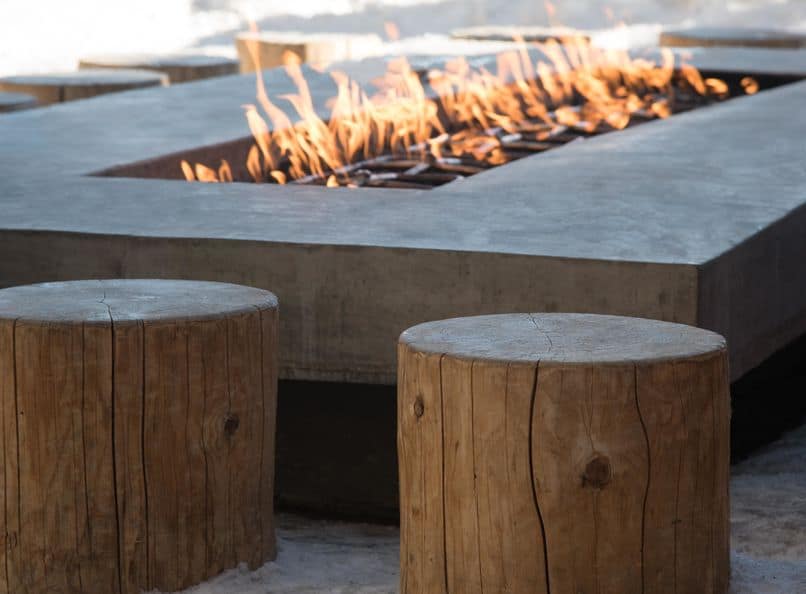
- Normally have built-in ventilation system (slats or vents);
- Considered to be safer than wood-burning because they don’t release smoke or heated embers into the air which could light surrounding surfaces on fire. But there are precautions to make this unlikely;
- Easier to keep clean and keeps surrounding area free of ashes and debris for a tidy, pretty space to enjoy your pit experience;
- No smoke emanates from these, so nothing hinders your ability to see your happy friends and family or continually breathe fresh air;
- Must pay for a gas tank and bear the cost of exchanging out for new ones if you use your pit often; and
- Get one with removable glass panels to make the flames more wind-resistant, otherwise, they are not impervious to the gusts.
Wood-burning fire pits
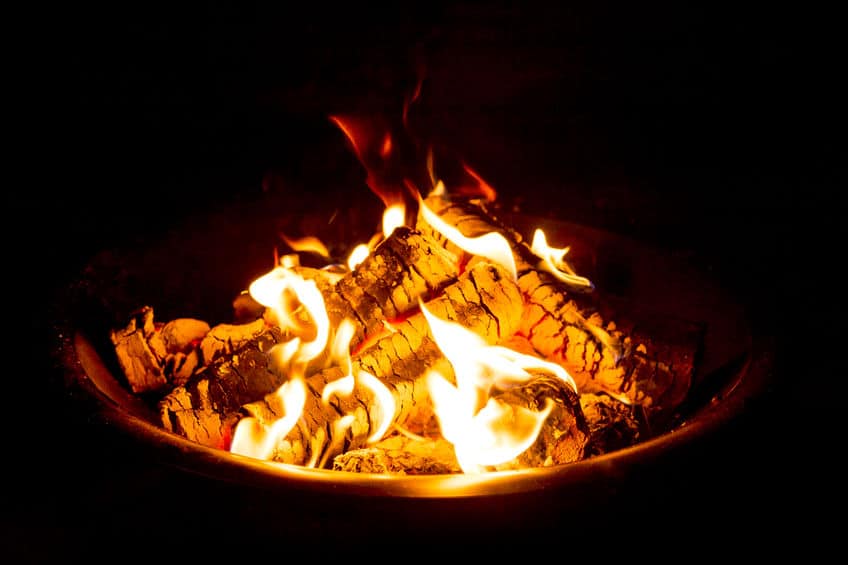
- Normally have holes pre-drilled and treated to provide airflow and prevent rust from rain and outdoor moisture;
- Let you enjoy the “pop” and “crackle” sound that accompanies a natural wood fire;
- Easy access to air intake holes, so you can always keep them clear of debris or otherwise keep them unplugged. Tip–Keep the wood in the middle of the pit, so the holes along the bottom rim are able to take in oxygen for the flames;
- Give you that true outdoorsy feel, complete with the scent of the wood and some smoke to warm your soul in addition to your body;
- Of course, with wood, you should keep your pit a good distance from hanging tree leaves, wood deck railings, and other easily flammable structures due to sputtering, hot embers;
- Must provide your own wood; and
- Not wind-resistant, so best to use when the air is mostly still.
Smokeless fire pits
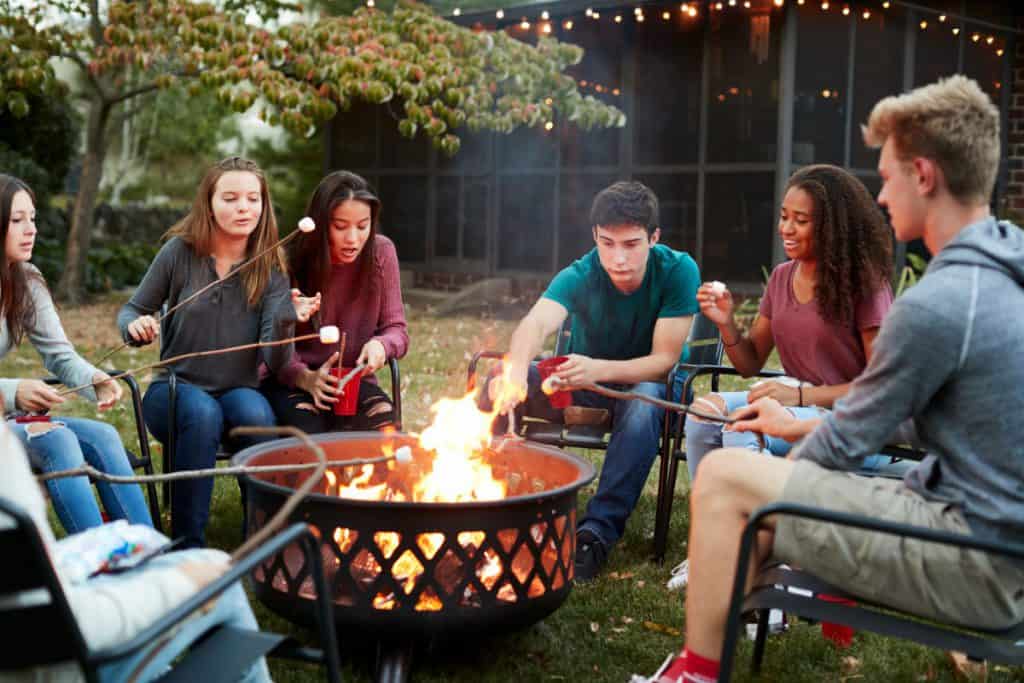
- These are the newest, most innovative style of pits, and are cleaner and safer than both gas and wood-burning pits;
- Like gas pits, they’re smokeless, but they’re also odorless. Even with a gas fire pit, there’s a hint of gas odor in the air, and it can even linger a few days if it seeps into wood structures and nature around it;
- For those of you who don’t require the nostalgia of the scent and sound of natural wood and don’t like any odor battling against the fresh air, this is a great option for you;
- Are available in many different styles and shapes to match your personal style;
- Must provide your own wood. But the wood is more efficiently burned which saves you money. The way the fire is conducted is also more efficient, resulting in almost no smoke and no odor. Keeps the neighbors with open windows from getting upset about air pollution. Those persnickety Joneses!
- Substantially wind-resistant without glass panels.
Fire Pits Without Holes

While some pits without holes may be on the market somewhere, they are not recommended. Without steady oxygen flow into the flames from below or the sides, your fire will be more like a candlelight.
That won’t keep anyone warm on a chilly night. If you decide to build your own pit, add the holes or otherwise vent with slats or other types of vent openings.
NOTE: If you are the one who drills in the holes to your metal pit, the inner edges will likely rust much more quickly than those done by the manufacturer, so it’s probably best to just spend the extra cash and get one pre-vented rather than have to replace yours after one season.
Holes are also important because the airflow they create releases excess gasses from the pit’s structure.
Especially with wood-burning pits… we want those gasses to float up and away from us, as too much inhalation can be harmful to us. Such gasses are a mixture of toxins that are detrimental to human health.
The Environmental Protection Agency offers material on wood smoke and your health.
Why Do Some Have Holes and Others Don’t?
Most pits do have holes because they’re above ground. But if you opt for an in-ground, non-portable pit, then there must be another air intake system since holes at the bottom will only be closed off by the ground beneath.
With built-in pits, the structure is different and provides different results to the user. As to air ventilation, though, to keep the flames bright and lovely, another type of construction will take care of this.
Typically, a pipe of some sort runs from the bottom of the pit to the outside air. The idea is similar to how steam is vented out of our homes from washing machines and dryers.
We don’t want an explosion in the fire pit just like not wanting one in our home. And, this piping, or venting as it’s also called, is what protects either type of dangerous incident. Be sure to consult a professional about the proper pipe material for this purpose.
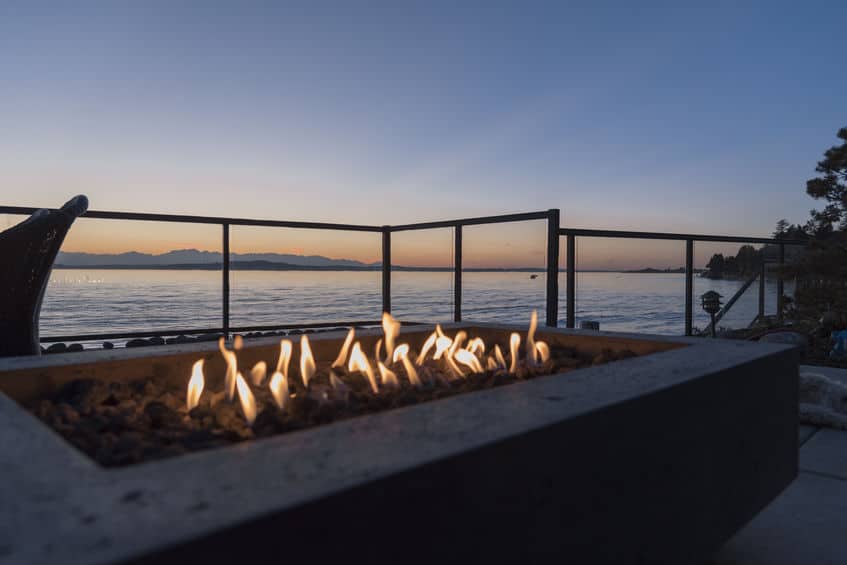
With a propane-fueled pit, be sure a vent is installed on both sides of the container structure (among the brick sides, cut into the metal sides, or placed in whatever fire-safe material makes up the container). This will create cross-ventilation which is important to be sure gas doesn’t get trapped on one side, resulting in safety risks.
The design of the in-ground pit must also be approved by your local building and zoning department. Every city has its own rules and regulations on how certain structures and fixtures must be built on residential property.
That’s where your tax dollars go! Might as well take advantage and play by the rules so you don’t get fined later. That would bite!
Should You Drill More Holes in Your Fire Pit?
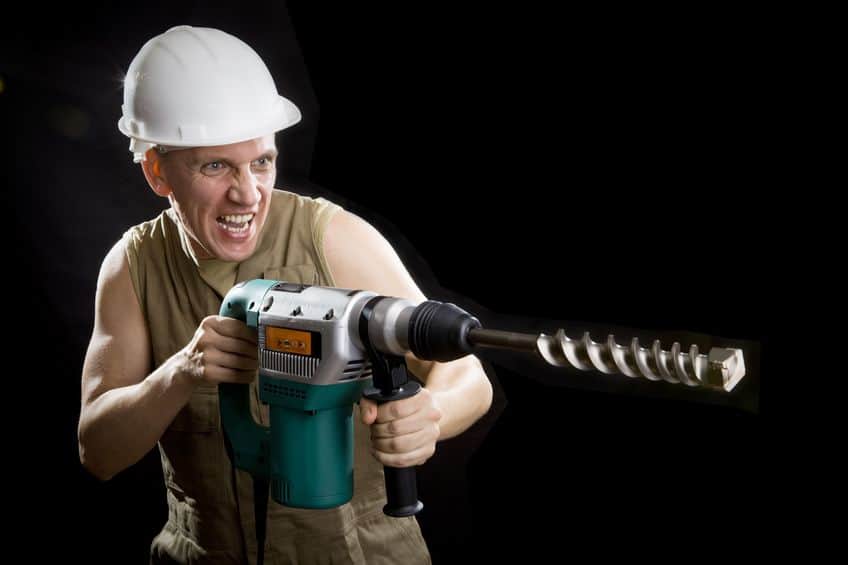
You shouldn’t have to unless you have a metal above-ground pit. Having nothing to do with air intake, these pits will rust along the entire bottom if rain pools inside of it and sits there for days. You have a few options to avoid rusting out your pit bowl due to rain.
- Store it indoors;
- Store it outdoors on a tilt to allow rain to pour out of it;
- Cover with a tarp, but only AFTER it’s completely cooled from a fire. You’ll want one that’s made of strong synthetic material; or
- Drill a couple of small holes in or near the center of the bottom. The holes should be less than 1/3 of an inch. If the holes are bigger, they may cause too much of the fire conductor (wood, paper, etc.) to fall out the bottom, leading to a wimpy fire or something beneath the bowl catching fire.
Should a Fire Pit Ever Have Both Holes and a Vent?
Not necessary, unless it’s a pit colossal in size, like the one used to light the Olympic torch. One or the other, as long as properly constructed and placed will be just fine.
ALWAYS Read the Manufacturer Instructions
There are many different fire pits out there to create that wonderful backyard ambiance in summer or the cooler months, but if you don’t use and care for your pit the way it’s intended, you’ll miss out on its benefits and long-term use.
If you’re opting for a traditional above-ground fire pit, likely made of metal, it will probably already have the necessary air intake holes, but you may or may not need to line the pit with sand or other heat-absorbing product. That’s where the ever-important user’s manual or instructions come in. Read those and do what they say.
It’s the smartest way to avoid damaging your purchase and getting the most enjoyment out of it. You’ll see that using sand in your pit will not hinder the ability of the holes to maximize the length and beauty of your fire. We all want that warm glow and cozy feel to last as long as possible without damaging our property.
TIP: Sales on fire pits occur mostly at the end of summer and the end of winter. Shop smart and enjoy!
Alright, that’s it for this article guys, if you found it useful then a share on social media or your website would be cool!
All the best
Steve
ps here’s a few articles related to this one you might find interesting:
What fuel is best for a fire pit? – 7 fuels To Consider!

